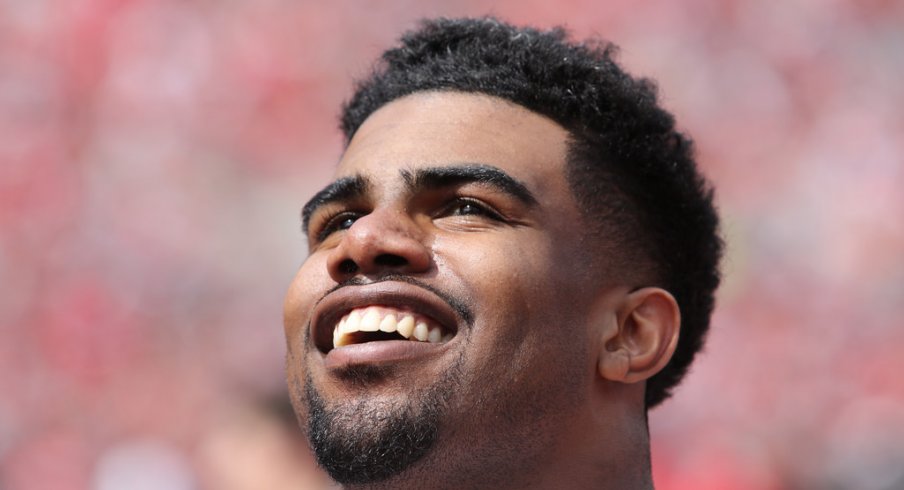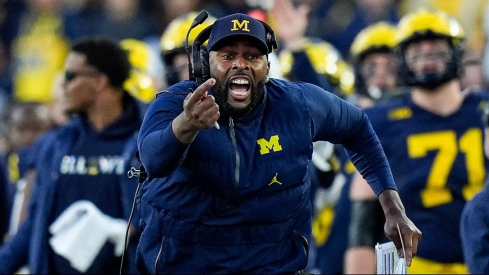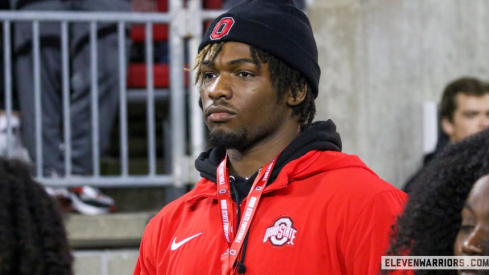Ohio State head coach Urban Meyer didn't want to disrespect his Heisman Trophy candidate at running back, he simply wanted to illustrate how easy things were made for him at times last year during the Buckeyes' unprecedented three-game run to a national championship.
"I'm not disrespecting Zeke, but a couple runs against Wisconsin, I can do that," Meyer joked last week at Big Ten Media Days. "I would have got caught, but [the offensive line] were opening it up."
The answer was in response to the questions a lot of people were asking at the end of last season: What in the world got into Elliott and why did he explode onto the scene in the final three games of the year? Was it because Cardale Jones was at quarterback? Was it a product of dominant offensive line play? Did Elliott really get that much better? All of the above?
"I think it was a combination of the offensive line, too," Meyer said. "I think it was a development of the offensive line as one and I do believe Zeke got better."
Elliott ran for a total of 696 yards and eight touchdowns in Ohio State's wins over Wisconsin, Alabama and Oregon. He averaged a ridiculous 9.4 yards per carry as each performance seemingly topped the one before it.
In the Big Ten championship game against the Badgers, the St. Louis native had 20 carries for 220 yards and two touchdowns in the Buckeyes' 59-0 blowout victory. Against the Crimson Tide, Elliott gained 230 yards on 20 carries and scored twice in Ohio State's 42-35 win. And finally, in the 42-20 win over Oregon in the national championship game, Elliott scored four times and ran for 246 yards on 34 carries.
"Zeke, his freshman year, was OK. I never envisioned him to be what he became," Meyer said. "And that's all work. He's the best worker at tailback that I've ever had. He just got better and better and better."
But what about the Jones factor? Many believe some of Elliott's success over those three games was due to Jones' big arm and defenses constantly being worried about being beaten over the top by Devin Smith or another Buckeyes wideout.
After all, Elliott averaged just 98.5 yards rushing per game and 6.3 yards per carry in the 12 games J.T. Barrett started at quarterback.
"I think it was more a structure of the press coverage where they force you to go over the top a lot," Meyer said. "Devin Smith early in the year was pretty good. By the end of the year, he became ridiculous so we just tried to game plan as many possible ways to get him ... isolated on a safety and those kind of things. It was the development of Devin Smith, Mike Thomas also became more of a deep threat, where earlier in the year, who was our deep threat? Really didn't have much."
So, according to Meyer, Jones being the quarterback didn't have a whole lot to do with Elliott's success toward the end of last season. Rather, it was the improvement of the guys around the Buckeyes' signal caller.
It might be hard to ignore Elliott's success with Jones as quarterback as Meyer must decide between Jones and Barrett as Ohio State's quarterback in 2015, but the fourth-year coach doesn't seem to think it will play a factor.
Everything else will.


